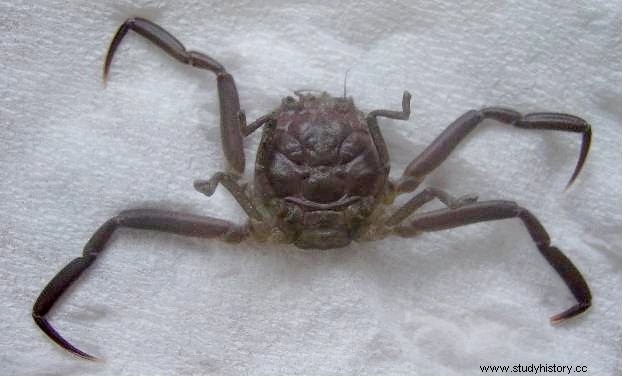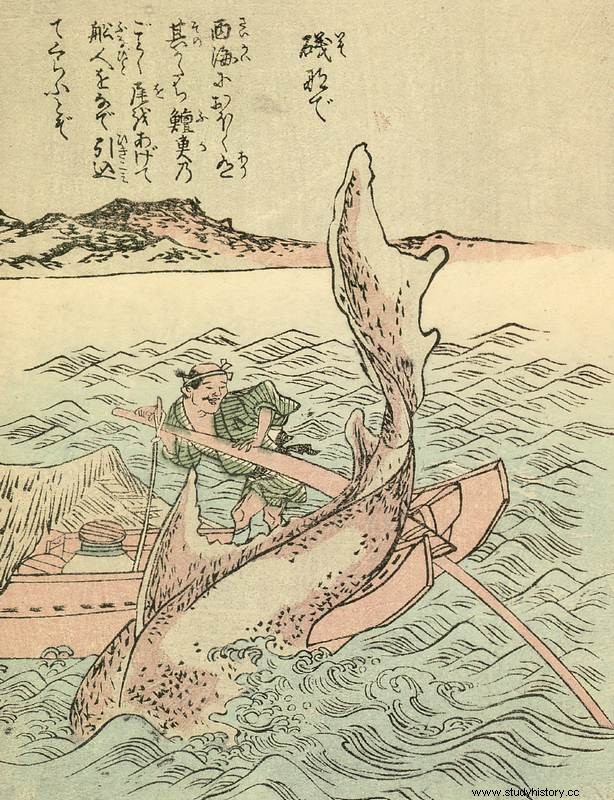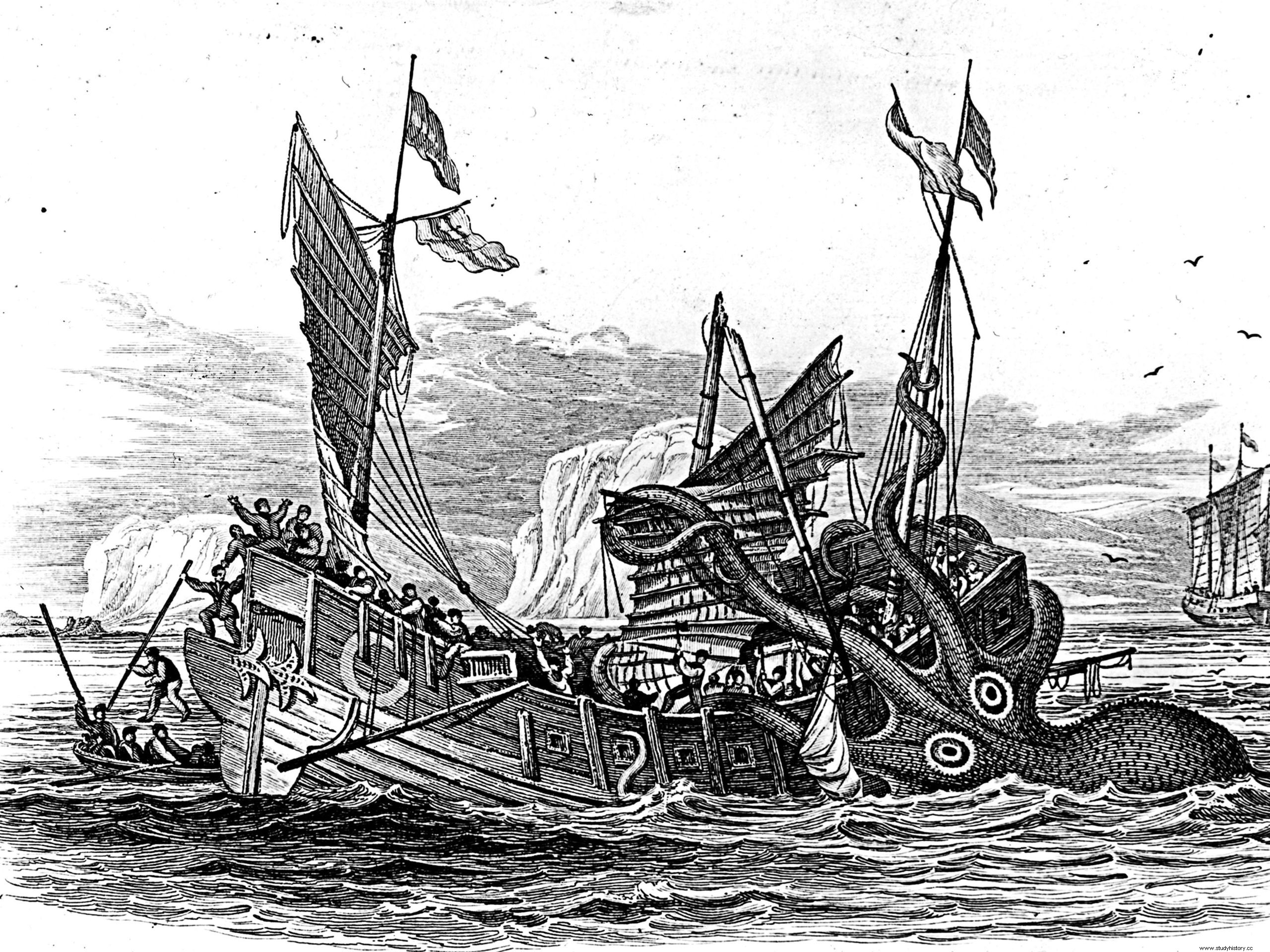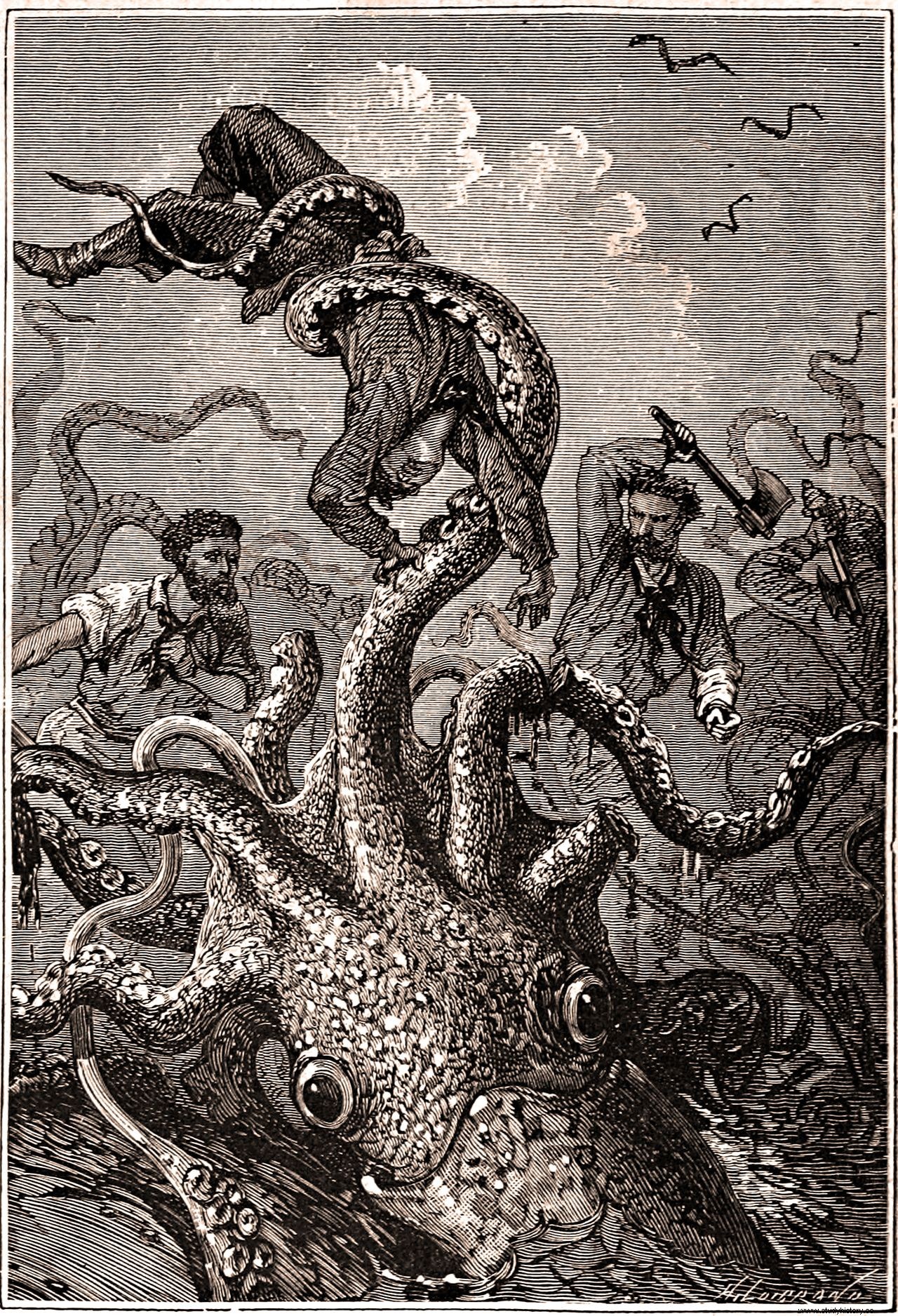Humans have been sailing the seas for ages. Those who have sailed have returned with stories of creatures roaming under the expanse of the sea. These stories of mythical monsters abound across cultures in places where humans have lived by the ocean for centuries. Some myths have several versions, each of which changes a little over time and depending on the narrator. We take a look at the myths behind the Heikegani crabs, Isonade, Kraken, Scylla, mermaids and sirens here, followed by various explanations given for the observations of these mythical sea creatures.
Mythical creatures in the ocean
Heikegani
Heikegani, also known as Samurai Crab, is a crab species locally in Japan. The Heikegani crabs have a pattern on the shells that resembles the face of a raging samurai. So the story goes on - as told in The Story of Heiki - that it was the Heiki warriors who were sunk at the bottom of the sea, after the battle of Dan-nu-ura, who returned in the form of the Heikegani crabs. It is their faces on the shells of these crabs because these warriors were reincarnated in the Heikegnai crabs.


The Taira clan (also known as the Heiki clan), the imperial rulers of Japan in the 12th century, and the Minamoto clan (the Genji clan) were at war, with the latter trying to seize the crown. The last battle of this war, the Genpei War (1180-1185), was the Battle of Dan-nu-ura. The Taira clan, led by their child emperor Antoku and his grandmother Taira no Tokiko, fought bravely, but they were outnumbered. As defeat, death, and pain increased, Taira no Tokiko took her grandson, Emperor Antoku, and jumped into the sea. Many of their warriors did the same. Antoku was worshiped as the "god of the sea" thereafter, and the samurai returned over time, reincarnated in the form of the Heikegani crabs.

Isonade
Isonade, or "beach stroker", is a mythical monster that lives especially off the coast of Matsuura, but also other areas around the west coast of Japan. Isonade is a creature that looks a bit like a shark maybe, but no one knows for sure. This is because, as related in Ehon Hyaku Monogatari - a picture book about supernatural beasts and monsters from the 19th century-, Isonade has never really been seen by anyone because it hides under the waves. The only part of it that has ever been seen is the tail covered by countless small barbs.

As Isonade approaches the boat, strong winds begin to blow. It's the only term for the rest that Isonade makes extremely insidious. If you do not watch out for the sudden strong wind, you will miss the sign that it is fast approaching, or that it is already here. Isonade uses his tail to catch the people in the boat and pull them down into the bottomless pit of the sea, where it swallows them. Sometimes it uses its tail to capsize the boat and take the feed of sailors from those it has just overturned in the sea. It can also use its tail to strike and sweep a beach and kill it from there.
Kraken
De Kraken, from Norse mythology, is a sea monster that resembles something from the squid family (squid, squid and the like). It is gigantic and frightening, and lives off the coast of Norway and Greenland. Myth says that they are so huge that when they appear, they look less like fish and more like land. It is said that there are probably only two Kraken, which seem to be unable to reproduce, and that explains why they do not increase in number. It is said that they always appear in the same places, ie in the Greenland Sea, which borders the coast of Greenland and Iceland, and the Norwegian Sea and the Arctic Ocean. Apart from ravaging the sailors, it is a cause for fear for the other fish in the sea as well. When the Kraken gets hungry, it devours the nearby ships and boats. Alternatively, when there are no ships around, it opens its giant mouth and burps so the food comes up a bit. The fish around think there is food they can eat and hurry towards it, only to be eaten by Kraken. Sailors who believed in this myth would be able to avoid running into the mouth of a Kraken by looking for the signs around:small rocks protruding from the surface of the sea may be the nostrils and lower jaw at a glance, and an island that does not is an island, but sinking would be a sign that it is actually Kraken's head! The sailors would then skirt around such areas.

Scylla

Scylla, from Greek mythology, was a beautiful nymph - a female deity of nature associated with a particular landform - transformed into an abominable monster that devours sailors from ship decks. The story has different versions. According to one, the sea god Poseidon falls in love with Scylla and demands her for himself. When Amphitrite, Poseidon's second wife, hears about this, she gets angry. Amphitrite then poisons in the spring where Scylla always bathes. Scylla goes in for a swim, and turns into an ugly monster. In another version, Glaucus - the fisherman who became a sea god - falls hopelessly in love with Scylla. However, Scylla is not at all fascinated by his fish form and goes to an elevated land where he would not be able to follow her. Gluacus, broken heart, goes to the sorceress Circe and asks her for a love potion that will help Scylla see the love in him. However, Circe finds himself fascinated by Glaucus. When Glaucus does not give back love, Circe tries to do away with her rival and poisons our Scyllas, where she always bathes. Scylla takes a bath in the spring and turns into an ugly monster, with four eyes, six serpentine necks, three rows of sharp, shark-like teeth, six dog heads around her waist, a dozen tentacle bones and the tail of a cat.

Sirens
Sirens from Greek mythology were creatures that were different combinations of a woman and a bird. In early Greek art, they have been depicted as birds - all with feathers as well as scaly feet - except for the head, which is an enlarged head of a woman. This was followed by the fact that they were later depicted as creatures with the body of a woman, but the legs of a bird, and it may or may not have wings as appendages. In the 7th century, sirens had the upper half of the body as a woman, and a fishtail as the lower half of the body. Sirens are known to be dangerous creatures that sing with their enchanting voices and play music that enters the listener, to wreck ships. They could even "charm" the winds, thus creating a successful shipwreck.

Mermaids
The mermaid is a mythical creature that lives in the sea, and has the upper body and head of a woman, while the lower body is a fish - a fish tail, to be precise. Myths about mermaids are found around Europe, Africa and Asia. A story from the ancient Assyrian empire (a Mesopotamian empire from the 25th century BC to 612 or 609 BC) tells that the goddess Atargatis has transformed herself as a punishment for accidentally killing her beloved. The notion of mermaids is said to have derived from sirens in Greek mythology. Sirens were half female and half bird-like creatures, which turned into half female and half fish-like creatures in Christian times.
Mermaids have a male counterpart, called a mermaid, but mermaids have been very rarely seen:it is mostly the mermaids that have been discovered by the sailors. Mermaids can either be benevolent and helpful, or they can be vengeful and vicious. Also in folk tales and modern stories, mermaids are usually associated with a catastrophic event at sea, such as a storm, a shipwreck, a flood or a drowning event. They have been represented as beautiful seducers who appear to lone sailors on long voyages. So, when they have lured the man enough, they drag him into the dark water.

Other theories and interpretations

It is possible that these myths have a basis in reality; that these creatures actually exist, and those who would come back with stories about them, were actually given kindness or cruelty in the hands of these creatures. But in addition to these stories and narratives, there are other theories that explain why people have had these observations also accumulated over the years.
Carl Sagan explained in his TV series Cosmos:A Personal Voyage that the Heikegani crabs exist in such large numbers off the coast of Japan, because every time people would end up catching these crabs, they would throw them back into the the sea of respect for the Heiki warriors. Over time, due to this inadvertent artificial selection , increased the population of Heikegani crabs in the sea. Others, like Joel W. Martin, dispute it, saying that people do not use Heikegani crabs for food anyway, which means there should be no increase in their population growth to begin with. Also, these crabs have not developed these samurai faces over time, because the grooved pattern on the shells of these crabs is actually where many of their muscles attach, and therefore it has a functional purpose that it serves.
But why are there samurai faces on these crabs to begin with, anyway? pareidolia The term is given to the tendency in human perception to give meaning to stimuli, especially visuals, which means that they tend to see patterns or faces in objects where there are none. This may explain why we see the samurai faces in these crabs. Although it may just as well be that the myth has substance, and we are too eager to deny it because it does not fit into our model of science as we know it right now?
The octopus has been explained away with how it is possible that the sailors may have looked at giant squid instead. Giant squid can grow in size up to 13 to 15 feet! Similarly, a theory of mermaids suggests how lonely sailors at sea would actually see a seal or a manatee swimming next to their ships, confusing them with a mermaid. Call it a deliberate illusion? Another theory combines this to talk about how these sailors would be at sea for an extremely long time. Over time, they will develop a deficiency of vitamin C that can lead to scurvy. Scurvy is a biological condition caused by extremely low levels of vitamin C in the body, and it affects the gums and teeth of humans, which begin to bleed. However, slightly severe cases of scurvy also cause hallucinations. These mermaids can then be the result of extreme loneliness and hallucinations while out sailing in the sea for extended periods.
the conclusion

It is also interesting to note how the image of mermaids as beautiful seducers who are also mortal, resonates with the modern perception of a woman - femme fatale. Femme fatale is a woman who is "sexy", but is extremely deadly and wants to kill you too. This makes one wonder how pervasive this theme is when it comes to representing an "ideal" woman in the media and literature. Folklore tells of observations of mainly mermaids and not mermaids. This too makes one wonder who the author is r of these folklore were. Whether or not these creatures existed to the letter as described by humans out at sea is left to the reader to understand. What is interesting, however, is how and why - if they existed - the human imagination has transformed them into something else, and if they did not exist, how and why did we end up constructing them out of thin air?
